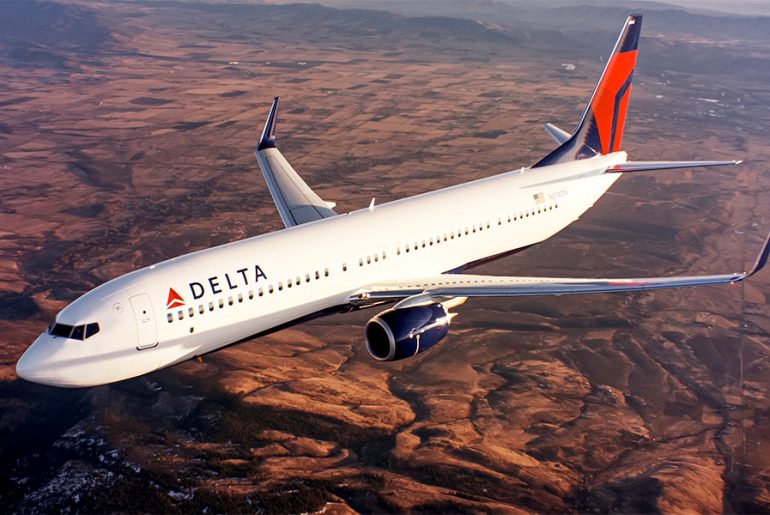On May 28, 2025, Delta flight DL275 was forced to divert to Los Angeles International Airport following a serious malfunction in the aircraft’s engine anti-ice system during its transpacific journey. The Airbus A350-900, operated by Delta Air Lines on its Detroit to Tokyo route, faced technical difficulties that forced pilots to make an emergency decision approximately 3,200 nautical miles into the journey. The diversion occurred at exactly 01:08 UTC after 37 minutes of intense cockpit crisis management, highlighting the challenges airlines face when dealing with in-flight technical emergencies over vast ocean distances.
What Happened During the DL275 Emergency
The aircraft had originated from Detroit Metropolitan Wayne County Airport (DTW) with Tokyo Haneda Airport (HND) as its destination before experiencing malfunctions in the Rolls-Royce Trent XWB engine’s anti-ice system. The anti-ice system plays a crucial role in preventing ice formation on engine components, particularly important during high-altitude flight over cold oceanic regions.
Three minutes after initial warning signs appeared from the anti-ice system, pilots were forced into 37 minutes of intense cockpit crisis management. The crew had to evaluate multiple factors including weather conditions, fuel levels, passenger safety, and available alternate airports before making their decision to divert.
Timeline of Events
Flight tracking data from Flightradar24 shows that the aircraft had traveled approximately 3,200 nautical miles from Detroit when the anti-ice system malfunction was detected, with 4,800 nautical miles remaining to Tokyo. The pilots chose the safer option of diverting to Los Angeles International Airport rather than continuing across the Pacific with compromised engine systems.
| Event Details | Information |
| Flight Number | Delta Air Lines DL275 |
| Aircraft Type | Airbus A350-900 |
| Engine Model | Rolls-Royce Trent XWB |
| Departure Airport | Detroit Metropolitan Wayne County (DTW) |
| Original Destination | Tokyo Haneda Airport (HND) |
| Diversion Airport | Los Angeles International (LAX) |
| Incident Date | May 28, 2025 |
| Diversion Time | 01:08 UTC |
| Crisis Management Duration | 37 minutes |
| Distance Traveled at Incident | 3,200 nautical miles |
| Remaining Distance to Tokyo | 4,800 nautical miles |
| Total Flight Duration | 12 hours 15 minutes |
| System Affected | Engine Anti-ice System |
| Flow Rate Reduction | 50% |
| Total Estimated Cost | $2.3 million |
| Revenue Loss | $1.9 million |
The diversion required the aircraft to fly for an additional five hours, bringing the total flight time to approximately 12 hours and 15 minutes. Throughout the emergency, flight crews maintained constant communication with air traffic control and Delta’s operations center to coordinate the safest possible landing.
Technical Details Behind the Engine Anti-Ice System Failure
The Airbus A350’s Rolls-Royce Trent XWB engines incorporate advanced anti-icing technology to stop ice formation on vital engine parts. When these systems malfunction, especially over oceanic routes where temperatures can drop significantly, the risk to flight safety increases substantially.
Investigation showed the anti-ice flow rate dropped by half, a condition that advanced monitoring systems could have detected and flagged for maintenance attention well before takeoff. This raises important questions about preventive maintenance protocols and real-time system monitoring capabilities.
Safety Protocols and Crew Response
Travelers praised the Delta crew for maintaining composure and demonstrating professionalism during the entire emergency incident. The crew followed established emergency protocols while keeping passengers informed about the situation without causing unnecessary alarm.
The pilots’ decision-making process involved weighing multiple critical factors:
- Remaining fuel capacity for various routing options
- Weather conditions at potential alternate airports
- Severity and progression of the technical malfunction
- Passenger safety and comfort considerations
- Operational costs and scheduling impacts
Economic Consequences of the DL275 Emergency Landing
The diversion created significant financial burden across various operational areas, with lost revenue from the cancelled Tokyo route totaling $1.9 million, as disruption impacts spread throughout Delta’s network operations. The total estimated cost of the diversion reached approximately $2.3 million when factoring in fuel costs, crew expenses, passenger accommodations, and operational disruptions.
Passenger Rebooking and Compensation
Passengers were safely rebooked following the diversion, with Delta working to minimize inconvenience through alternate routing options. The airline provided necessary accommodations and meal vouchers for affected travelers while arranging onward transportation to Tokyo.
The incident affected not only the immediate passengers but also created ripple effects throughout Delta’s Pacific route network, requiring aircraft and crew repositioning to maintain scheduled services.
Aviation Safety Lessons and Industry Impact
Incidents like these often serve as case studies in aviation training and risk management, with airlines using such cases to reinforce Standard Operating Procedures (SOPs) while maintenance teams review protocols for mid-flight system alerts.
Predictive Maintenance and Future Prevention
The delta flight dl275 diverted LAX event will be studied to improve safety protocols, communication strategies, and predictive systems, with enhanced real-time monitoring potentially detecting issues earlier in the near future.
Modern aviation increasingly relies on predictive maintenance technologies that can identify potential component failures before they occur. The DL275 incident demonstrates both the current limitations of these systems and the potential for improvement through advanced monitoring capabilities.
Technology’s Role in Aviation Emergency Response
Aviation tracking AIs like FlightAware and SkyIntelligence flagged suspicious flight behavior long before any formal announcement was made, showcasing how advanced monitoring systems can provide early warning signs of developing situations.
The integration of artificial intelligence and machine learning in aviation maintenance and operations continues to evolve, with incidents like DL275 providing valuable data for improving predictive capabilities and emergency response protocols.
Conclusion
The DL275 emergency landing at Los Angeles International Airport exemplifies how aviation safety systems function properly even with a $2.3 million financial impact. While highlighting predictive maintenance vulnerabilities, the incident showcased professional crew response and established emergency procedures. This emergency illustrates how technical failures can cost airlines millions while emphasizing AI-powered predictive maintenance potential. The DL275 diversion provides valuable learning opportunities for improving passenger safety and preventing future occurrences through enhanced monitoring technologies and comprehensive crew training.






